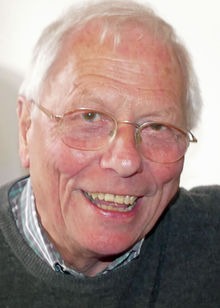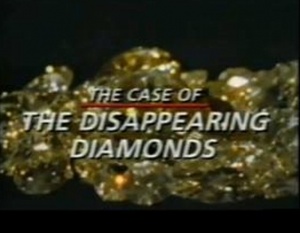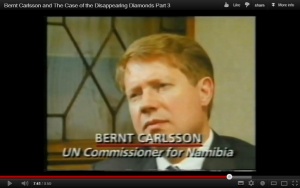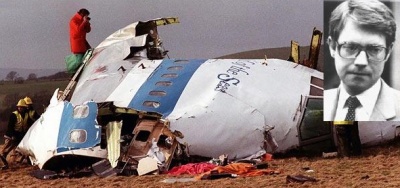Laurie Flynn
(filmmaker, journalist) | |
|---|---|
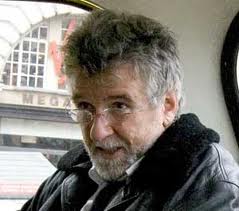 | |
| Born | Vincent Laurie Macpherson Flynn 1946 Scotland |
| Founder of | Alba Party |
Award-winning journalist and filmmaker | |
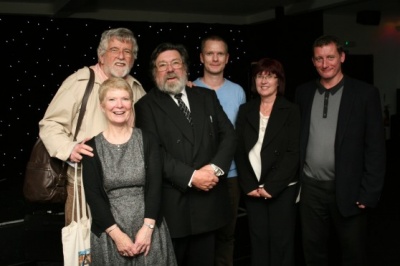
Laurie Flynn (born 1946 in Scotland) studied under Marxist Professor Ralph Miliband at the London School of Economics and graduated in 1968. Thanks to Paul Foot's mentoring and an introduction to Construction News, Laurie Flynn cut his journalistic teeth covering the 1972 Building Workers' Strike which led to the conviction of 24 pickets, known as the Shrewsbury 24. One of the pickets jailed was Ricky Tomlinson (best known for his role in TV's "Royle Family") who continues to campaign to have the conviction of the Shrewsbury 24 overturned.[1] On 16 September 2012, Laurie Flynn attended a commemoration of the strike's 40th anniversary that was held at Tomlinson's club in Liverpool.[2]
Laurie Flynn went on to become an award-winning investigative journalist and prolific filmmaker, producing two authoritative World In Action documentaries on the Bhopal Disaster.[3] Chair of the Bhopal Medical Appeal, Laurie Flynn was arrested in London's Trafalgar Square on 20 July 2012, during a peaceful protest against sponsorship of the 2012 Olympics by Dow Chemical[4], BP[5], and Rio Tinto[6], the company that owns the US copper mine where the metal for the 4,700 Olympic medals was mined.[7]
On 30 April 2015, at lunch with Lockerbie campaigner Patrick Haseldine, Laurie Flynn recounted how he had arranged for UN Commissioner for Namibia Bernt Carlsson to travel from New York to Manchester for Granada TV's 1987 World In Action documentary "The Case of the Disappearing Diamonds":
- "Bernt insisted that we should visit several pubs in Manchester to sample the beer, which made for a very relaxed interview."
Haseldine was impressed with the Bernt Carlsson interview but told Flynn he was puzzled why there has been no inquiry into Bernt Carlsson's murder in the 1988 Lockerbie bombing:
- "The responsibility for investigating Bernt Carlsson's murder clearly rests with the Metropolitan Police since the bomb that brought down Pan Am Flight 103 was loaded at Heathrow. Why doesn't Scotland Yard launch a Bernt Carlsson murder inquiry?[8]
Contents
Disappearing Diamonds
- Full article: The Case of the Disappearing Diamonds
- Full article: The Case of the Disappearing Diamonds
Laurie Flynn did the research and investigation for the World In Action documentary film "The Case of the Disappearing Diamonds" which was highly critical of De Beers' exploitation of Namibia's gem diamonds. The 30-minute film was broadcast by Thames Television on 28 September 1987, and is available for viewing on YouTube: Part 1, Part 2, Part 3, and Part 4.[9] Flynn's colleague John Coates introduced the film as follows:
- "The United Nations Council for Namibia enacted in 1974 a Decree for the Protection of the Natural Resources of Namibia, under which no person or entity could search for, take or distribute any natural resources found in Namibia without the Council's permission. Any person or entity contravening the Decree could be held liable for damages by the future government of an independent Namibia. Companies like De Beers have ignored the law but now attitudes at the UN are beginning to harden."[10]
Fifteen months after "The Case of the Disappearing Diamonds" was broadcast, Pan Am Flight 103 exploded over Lockerbie in Scotland, killing all 259 passengers and crew. The Lockerbie bombing's highest profile victim - Assistant Secretary-General of the United Nations and UN Commissioner for Namibia, Bernt Carlsson - is interviewed in Part 3 of the film (7:32 to 9:10).
In the interview, Bernt Carlsson criticised the illegal exploitation of Namibia's natural resources, saying:
- "The corporation has been trying to skim the cream which means they have gone for the large diamonds at the expense of the steady pace. In this way they have really shortened the lifespan of the mines. One would expect from a worldwide corporation like De Beers and Anglo American that they would behave with an element of social and political responsibility. But their behaviour in the specific case of Namibia has been one of profit maximation regardless of its social, economic, political and even legal responsibility.
- "The United Nations this year [1987] in July started legal action against one such company - the Dutch company URENCO which imports uranium."[11]
- John Coates: "Will you be taking action against other companies such as De Beers?"
- Bernt Carlsson: "All the companies which are carrying out activities in Namibia which have not been authorised by the United Nations are being studied at present."
Among those facing UN compensation claims were: the diamond mining firm De Beers; P W Botha's apartheid regime of South Africa; Rio Tinto Group, owners of the Rössing Uranium Mine; and, the government of Iran which today still owns 15% of Rössing and, in 1988-89, received large shipments of uranium from Namibia. Because Bernt Carlsson died at Lockerbie, none of these prosecutions took place. No investigation by the Scottish Police, the CIA, the FBI or the United Nations has ever been conducted into the evident targeting of Bernt Carlsson on Pan Am Flight 103, despite the branding of apartheid South Africa as a "terrorist state" by Governor Michael Dukakis, Democratic nominee in the 1988 US presidential election campaign.[12]
Gordon Brown is Innocent
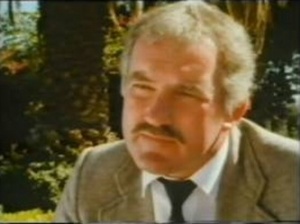
Laurie Flynn co-authored a pamphlet entitled "Gordon Brown is Innocent" with the Glasgow-born whistleblower, Gordon Brown, whom he met while investigating De Beers' mining practices for Granada Television’s World in Action programme in 1986:[13]
- "Since its foundation just over a century ago De Beers has become one of the most controversial business enterprises in the world. Its business practices in wartime, its use of migrant labour and discriminatory labour practices, its dalliance with apartheid, its clashes with American competition authorities and the United Nations have all been the subject of high controversy. In 2004 De Beers was given a formal criminal conviction in the United States for conspiracy to violate competition law and fined $10 million. In November 2005 the group agreed to pay $295 million to settle price fixing and restraint of trade law suits brought in law courts in Arizona, San Francisco and Trenton, New Jersey.
- "Whatever its problems in America, De Beers' fortunes are closely tied in with the highly political economy of diamonds in sub-Saharan Africa and with Botswana, South Africa and Namibia in particular. This pamphlet focuses on extraordinary events in the last of these countries. Occupied illegally for decades by apartheid South Africa and with the world’s finest deposits of gem diamonds, Namibia was the building block with which De Beers and its sister company Anglo American assembled the greatest treasure trove of assets in the world of mining. According to statements in the press and on their website Anglo and De Beers are very keen to distance themselves from a troubled past and will henceforth ‘always listen first and then act with openness, honesty and integrity so that our relationships flourish.’ If Gordon Brown’s experience is anything to go by the Anglo/De Beers commitment to integrity and law abiding behaviour has some considerable way to go. The way he has been treated is unconscionable and he calls out for justice and an end to the persistent violations of his human rights."
Gordon Brown's dossier of evidence against De Beers is set out here.
Brown's jail-term ordeal
On 27 May 2015, Charles Courtney-Clarke posed the following question for Laurie Flynn:
- Was the "disappearing diamonds" case, based on the Thirion Commission of Inquiry 1985, ever quantified in his book or elsewhere?
And, more importantly, I would like to know whether Flynn has the full copy of the British police investigator's report into the diamond case against Gordon Brown (State vs Cohen van Zyl and G. Brown CC21/94 RC95/941996). The Scottish Sunday Times (Michael Gillard) reported Brown's jail-term ordeal with De Beers manipulation of the Namibian justice system that Brown escaped from. The news report triggered De Beers "white collar" gangsters to come down on the Sunday Times, they were forced to verify the truth about Brown's ordeal and thus the police investigator was sent to Namibia in 1996. Brown contributed key evidence that initiated the Thirion Commission of Inquiry - discovered a quantum of damages and theft running into billions of dollars. There is a catalogue of evidence from Namibia on the links and modus operandi of the "Key Financial Beneficiary" to the wealth of Namibia weighing in on the Lockerbie plane crash that killed UN Commissioner for Namibia Bernt Carlsson in 1988.[14]
"Studded with Diamonds"
In September 1992, Laurie Flynn wrote "Studded with Diamonds and Paved with Gold: Miners, Mining Companies and Human Rights in South Africa" which looks at the historical links between the wealth of London and the rural poverty of South Africa. He examines the safety and accident record of a mining industry where one human being dies for every ton of gold mined while the causes of preventable disasters are seldom properly probed by public enquiries. He exposes the cruelty of the migrant labour system and the prison-like conditions of the mining compounds.[15]
"A Damned Good Investment"
Under the heading "A Damned Good Investment", Paul Foot reviewed Laurie Flynn's book as follows: Everyone knows that diamonds are a girl's best friend, that diamonds are for ever, but where do the diamonds come from? It's a question that Keats asked, and he was pretty indignant about the answer.
- With her two brothers this fair lady dwelt,
- Enriched from ancestral merchandise,
- And for them many a weary hand did swelt
- In torched mines and noisy factories,
- And many once proud-quivered loins did melt
- In blood from stinging whip; with hollow eyes
- Many all day in dazzling river stood
- To take the rich-ored driftings of the flood.
"Why were they proud. Why in the name of glory were they proud?", Keats demanded of the dazzling trio. That it might be wrong that so many human beings should suffer in order that others can dress up in diamonds seems to have been lost on the South African mining industry, which provides most of the world’s supply of the gems. It appears never to have occurred to them that the black migrants who dig the diamonds out of the ground have any grievances. A much more serious problem for the mining companies has been that the miners might steal diamonds, swallow them, excrete them and sell them on the open market. This is one of the reasons for the 'common latrine', the long metal trench in which diamond miners are obliged communally to defecate. Some engineering genius associated with the industry has designed a new machine which sifts through the miners’ stools and detects the slightest particle of excreted diamond.
When I read about this machine in "Studded with Diamonds and Paved with Gold", I thought Laurie Flynn must be exaggerating. A week later, two women came into my office at the Daily Mirror. They had worked for a total of forty years, they said, as diamond sorters, at the sumptuous London headquarters of the diamond mining company De Beers, just across the road, but had recently been sacked – for allegedly stealing diamonds. Allegedly? How had this crime been proved? Well, they explained, no diamonds had been found on them or in their homes, for the very good reason that they hadn’t taken any. They had been accused of stealing, and sacked, because of ‘unusual movements’ they had made with their hands while sorting the diamonds. These 'unusual movements' (touching ears was especially suspicious) had been picked up on the video under whose Big Brotherly gaze they had been working. I concluded that if De Beers could sack white people on such a flimsy basis in good old democratic London, they were perfectly capable of designing special machines to sift through black miners’ shit in Kimberley and the Cape.
It is 25 years since Laurie Flynn helped to occupy the London School of Economics in 1968 – and nearly twenty years since he came cursing and fuming into the offices of Socialist Worker to write a tremendous indictment of the Scottish lagging industry, whose negligence with asbestos had sentenced thousands of unsuspecting workers to death. Unlike so many other angry young journalists of the Sixties, Laurie Flynn has not lost his indignation, nor his determination to publicise the sins of negligent employers. For most of the Eighties he worked for Granada’s World in Action, one of the few redoubts of investigative journalism to survive that grim decade. World in Action provided him with the funds and the facilities necessary to expose on film this most secretive industry.
The discovery of the automated crap-sifter came from Flynn’s study of the eating, toilet and medical facilities afforded to migrant workers by the mining companies. Gabriel Hlaele, a black miner, told him:
- "Now Kloof is a big mine with 15,000 workers and every day there will be fifty or more men in for acclimatisation in the heat chambers. If you faint you get your temperature taken in two places. First the mouth, then the anus. But this is Gold fields, remember. Everything here is planned and organised along military lines. I imagine that they believe it would be wasteful to have too many thermometers. But for whatever reason the thermometer that measures the temperature in your mouth is also the thermometer that measures the temperature in your anus. And they don’t throw the thermometers away you know. There isn’t a new one for every different individual."
At the Penge asbestos mine in the Eastern Transvaal, Cyprian Gabetse saw a ‘big strong man’ hitting a sack with a whip. Inside the sack was a 12-year-old boy: "It was his job to get inside the bag and trample down the fluffy asbestos." Needless to say, the boy had already contracted asbestosis. He will not live long. But few black miners in South Africa do: only 5 per cent get to pensionable age. Thousands die as the result of outright negligence by the owners.
In 1967 nine miners were killed in a fire at Michael colliery in Scotland. The detailed inquiry which followed blamed the deaths on the poisonous fumes from polyurethane foam which had lined the roofs and walls underground. The National Coal Board promptly banned polyurethane foam from its pits, and sent its findings to mine-owners all over the world, including the South African Chamber of Mines. Five years later, the case against polyurethane foam was established beyond all doubt with the deaths by choking of 91 miners at the Sunshine Mine in Idaho in the United States. The owners of the mine had to pay punitive damages because they had ignored the findings of the Michael inquiry. Once again, the story was circulated all over the world. Eight years later still, in 1980, the South African mining company Gencor was faced with a problem at its Kinross mine: rocks were falling on the rail tracks and preventing the movement of mined gold. There were plenty of available remedies, including cement. That, however, would have been expensive and would have held up the daily flow of gold. So Gencor plumped for a cheaper option: polyurethane foam. Six years after the foam was installed a fire down the mine killed 177 miners. Most of the deaths were due directly to the foam. For this, one man was fined 40 rand. As Flynn’s chapter-heading has it, in the South African mining industry 'death is part of the process.' Eighty thousand miners have been killed in accidents in South African mines this century; they are still dying at the rate of eight hundred a year. These figures are six times worse than their equivalents in Britain or the United States.
If this book was nothing but a catalogue of horror, it would be distressing enough. But it is more than that. Laurie Flynn links the squalor of the compounds to the men and women whose comfortable lifestyle is funded by dividends from the South African mines. Eighty years ago an Australian writer reckoned that for every 1200 Rand paid in South African mining dividends there was a 'known and avoidable death'. The figures are not much less shocking today. Between 1950 and 1970 the Tsumeb mine in Namibia brought its shareholders a return of 348 per cent a year: at least ten times what investors in any sort of mine in the (profitable) US mining industry could hope to collect. And the shareholders don’t have to worry about recession. The group chairman of Consolidated Goldfields, Rudolph Agnew, put the point sensitively in 1985: "We are involved in a highly cyclical industry," he drawled, "and we should take the strain during periods of recession and crisis by maintaining the owners’ income at the highest practicable level."
The history of Consolidated Goldfields, incidentally, has been written for a fat fee by Paul Johnson, former editor of the New Statesman and later chief jester at the court of Margaret Thatcher. Laurie Flynn tells us that Johnson managed to complete his panegyric without a single interview with a migrant miner. Nor did he mention "the migrant labour system, low wages, anti-union attitudes, poor food, bad housing, inadequate shower rooms, dirty toilets and damaged human relations which predominated in Goldfields’ compounds." The company’s approach appealed to Mr Johnson’s heroine. When Mrs Thatcher needed to appoint a new chairman of British Coal in 1990 she selected an unexciting accountant called Neil Clarke – a director of Consolidated Goldfields. Clarke at once set about closing pits, sometimes illegally, but always with that cheerful disregard for the unions which was the hallmark of Consolidated Goldfields. When she needed an 'adviser' on monopolies she chose George Guise, a young executive from Consolidated Goldfields; and when plans were laid by the new Conservative government of 1992 to privatise British Coal, the chief adviser to the consortium widely tipped to take over British pits was the aforesaid George Guise.
There is only one word for what has been going on in the South African mines all this century: exploitation. Black migrant labour has been whipped, humiliated, robbed and murdered to enrich shareholders, mainly in another country, whose concern for most people in South Africa was well summed up by a former mine owner in evidence to a Royal Commission: "Why should a nigger be allowed to do nothing?" The whole vile process has been made much simpler by apartheid and by the backing of Conservative chieftains in London. Lord Erroll of Hale, another chairman of Consolidated Goldfields and a former Tory Cabinet Minister, told the Evening Standard in 1980: "South Africa is a damned good investment and one nobody should miss out on."
There is plenty in Flynn’s book to dilute the despair. More than that, there is, in the last few chapters, a wide measure of hope. Somehow, against all the odds, the miners fought back. The book ends with the growth of the South African National Union of Mineworkers. Laurie Flynn hopes, a little sentimentally, that the South African 'house of bondage' will turn into a 'house of freedom'. That will not happen by magic or by natural development or by negotiations with De Klerk. The forces that built the union against the mining companies are the only forces strong enough to defeat the apartheid state off which those companies flourished for so long.[16]
"Untouchables"
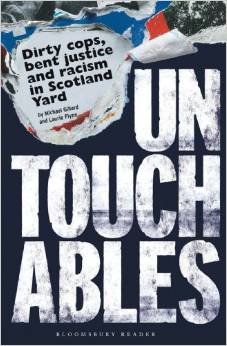
On 4 March 2000, The Guardian published an article by Laurie Flynn and Michael Gillard about Scotland Yard headlined "Corruption squad under fire". The newspaper's editor Alan Rusbridger succumbed to police pressure and declined to publish further articles on the subject. The two journalists refused to be silenced, however, and published their book "Untouchables - Dirty cops, bent justice and racism in Scotland Yard" four years later.[17] Addressing freelance journalists in 2001, Laurie Flynn said:
- "It is important to understand the motivations of the powerful 'to move among them, disarm them, look them in the eye'. Persistence, good manners and appealing to an individual's desire to do the right thing works across the board."[18]
On 6 March 2012, The Independent headlined an article by Laurie Flynn and Michael Gillard with "The copper, the Lawrence killer’s father, and secret police files that expose a ‘corrupt relationship’".[19] The leading article on the same day read:[20]
- It took the full weight of the Macpherson Inquiry to expose the institutional racism that hampered the Metropolitan Police investigation into the murder of Stephen Lawrence. Now, fully 19 years after the teenager's fatal stabbing, evidence from secret Scotland Yard files, published in this newspaper today, suggests there may be more – and worse – to come.
The Socialist Worker carried the story on 29 May 2012:
- Eight years ago Laurie Flynn and Michael Gillard wrote the "Untouchables". It exposed the police corruption at the heart of Scotland Yard — and the criminal links between cops, News International and politicians. Today, as the hackgate scandal is engulfing the entire political establishment, the book has been republished. The story of how two journalists began uncovering the corruption years ago is extraordinary.
- Laurie described how he and Michael stumbled upon sprawling networks of police corruption “almost by accident”:
- “We’d been looking at an arms deal involving British equipment being supplied to unpleasant people in Sierra Leone. We were told that there was no such deal and we found this rather difficult to believe.”[21]
The follow-up book "Untouchables - Dirty cops, bent justice and racism in Scotland Yard" was published in September 2012.[22]
Five-star reviews
On 2 May 2009, this review of the "Untouchables" 2004 edition was published on Amazon:
- At £200 for a second hand copy of this book, it's a national disgrace that this book hasn't been re-printed. It is inevitable though because this is the book that Scotland Yard does NOT want you to read. They have done all they can to sweep this under the carpet after initially trying to ban it. Everyone with any interest in law and order MUST read this book. It opens your eyes to all the dirty tricks that Scotland Yard has carried out resulting in some very dodgy convictions of its own men - convictions that are currently being investigated by the Criminal Cases Review Commission and the Independent Police Complaints Commission.[23]
The "Untouchables" 2012 reprint was reviewed on Amazon on 5 February 2013:
- As a serving police officer books of this nature are always difficult to read, you always steel yourself ready for a bit of cop bashing from an anti police faction with a score to settle. Although this book launches a sustained attack upon the Police it is balanced, evidenced and highlights deplorable behaviour of named officers who form the "Untouchables". Honest police officers are identified and seen as victims, efforts of whistle blowers are identified and consequently the book shows itself as balanced and objective. It shows clearly that the actions of corrupt officers impact dramatically on both the public and honest police officers. This book makes essential reading for any person in a position of power as a reminder of the responsibility that comes with the power. The book is complex and difficult to follow at times due to the volume of persons involved nevertheless a little perseverance and patience is all that is required to follow the plot. The book is a little out of date and does not include the update with regard to Commander Ali Dizaei which this book portrays as a martyr of sorts and yet he was found by a court to be guilty of perverting the course of justice in 2012. Doesn't make this book any less credible, if anything highlights further the complexities of police corruption. This is a captivating and compelling read and highly recommended. Investigative journalism at its very best.[24]
Filmmaker
According to South African filmmaker Lindy Wilson:
- "Laurie Flynn has a rare understanding of South Africa and is one of the best informed people, anywhere, on its mining industry. His values are sound and rooted in his background, his experience and wide reading. He also has a capacity to detect and extract deviousness and shoddiness from those desirous of hiding things, evidence of which is in his films. He combines an increasing skill of using the particular format of film together with that of a thorough investigative journalist and scholar and I have often described his films as work that gets right down to the bone."[25]
Laurie Flynn has produced a number of films, including:[26]
- "You Will Know Them By Their Trail of Death": An investigation into the asbestos industry which uncovers corporate murder, premeditated and on an massive scale. The film follows two widows on a quest to understand why their loved-ones died – a journey that takes them on a trail of death from disused, though still contaminated, asbestos factories and all the way to the mines in South Africa.[27]
- "The Class of 68": The film catches up with three socialists who were part of the 1968 protest movement to find out what happened to their dreams.[28]
- "My Name is Loneliness – The Art of John Mufangejo": The story of the troubled life of Namibia’s greatest artist John Mufangejo whose work reflects in equal measure the tenderness of humanity and the brutality of oppression.[29]
Awards
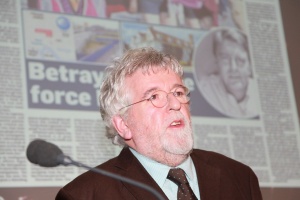
Laurie Flynn says: "I’ve been lucky enough to win a few journalistic prizes in my time. These include:"
- The Granada Gold Medal for protecting sources against court orders to disclose them while working at Granada’s famous programme World In Action on a revelatory programme about how the government deliberately provoked a national steel strike.
- While at Granada I also won gold medals at the Chicago and Warsaw film and television festivals for "Dust to dust" my investigation of the scandalous conditions in British and South African-owned asbestos mines in the Northern Cape. My film "The Betrayal of Bhopal" about the business malpractices of Union Carbide won two gold medals at the "New York International Film and Television Festival - one for best investigation and one for best written script.
- My film on the Kinross gold mining disaster, "Death is Part of the Process" was selected as the ITV entry for the Montreux Festival.
- And while working as an investigator at The Guardian, together with my writing partner (Michael Gillard) I won "Scoop of the Year" in the British Press Awards.[30]
- This was for an investigation published over five days which showed that the award-winning "documentary" from Carlton Television about an alleged drugs mule. "The Connection" was a lie from beginning to end. The exposure of "The Connection" fraud also resulted in Carlton having to send back fourteen international awards for its supposedly outstanding "documentary" and its courageous "risk journalism".[31]
Among his many awards, Laurie Flynn is proudest of the travel ban he received from the apartheid regime:
- "I also received a large back-handed compliment from South Africa’s apartheid government in 1987. For investigating shaming conditions and business malpractice at the world’s richest diamond mine run by De Beers, I was formally banned from visiting the world capital of racial capitalism and my passport stamped to that effect."[32]
In December 2013, Michael Gillard was named 'Journalist of the Year' but could not accept his award in person because of security concerns after exposing gangster David Hunt in the Sunday Times. Instead Gillard's friend and journalistic collaborator Laurie Flynn accepted the award on his behalf – dedicating it in part to the whistleblowers from inside the police and elsewhere who come forward to tell the truth in the public interest.[33]
On Journalism
Laurie Flynn loves the comments of Paul Anderson, the 1928 Pulitzer Prize winning journalist who led the investigation of Tea-Pot Dome, the scandal of American federal lands being leased at cut prices to people on the friends list, a scandal involving Shell, one of the greatest companies in the world, and deeply corrupt political figures close to the US President Harding.
- Anderson writes: "I have said it is the duty of the reporter to do something more than merely observe and record what comes his/her way. Genuine devotion to the truth demands far more than that. The truth is not always to be found on the surface; it cannot be picked off like peaches from a tree. There are concealed truths, the existence of which is but faintly indicated on the surface. It is the reporter’s business to get at them nevertheless."
St George Orwell also has many things to say of which Flynn is fond. The very best of these is probably his take on mining from his still challenging book "The Road to Wigan Pier": "Most of the time we should prefer to forget that they were doing….. manual work. It keeps us alive and we are oblivious of its existence. More than anyone else perhaps, the miner can stand as the (arche)type of the manual worker, not only because his type of work is so exaggeratedly awful, but also because it is so vitally necessary and yet so remote from our experience, so invisible as it were, that we are capable of forgeting it as we forget the blood in our veins. In its way it is humiliating to watch coal miners working. It raises in you a momentary doubt about your own status as an ‘intellectual’ and a superior person generally. For it is brought home to you, at least while you are watching, that it is only because miners sweat their guts out that superior persons can remain superior. You and I and the editor of The Times Literary Supplement, and the nancy poets and the Archbishop of Canterbury and Comrade X the author of Marxism for Infants – all of us owe the comparative decency of our lives to poor drudges underground, blackened to the eyes, with their throats full of coal dust, driving their shovels forward with arms and belly muscles of steel."
Flynn also loves Stuart Ewen’s masterly short book on advertising and the media titled "Captains of Consciousness." In it he quotes a thoughtful advertising copywriter called Helen Woodward writing about her 'profession' and providing all of us with a worthwhile warning about how we look at the world and its catalogue warehouse of manufactured products, images and ‘news’: "If you are advertising any product, never see the factory in which it was made. Don’t watch the people at work. Because when you know the truth about anything – the real inner truth – it is very hard to write the surface fluff that sells it."
The biggest journalistic influences in Laurie Flynn's life are Günther Wallraff, Paul Foot, John Pilger, Marjorie Wallace, Bruce Page, Martha Gellhorn, Sydney Lenssen and Edmund Dene Morel.
His all time favourite documentary films are Anthony Thomas’s "The Search for Sandra Laing", Claude Lanzmann’s "Shoah" and Barbara Grigor’s "Tree of Liberty", though he would stress that there are literally dozens and dozens of fine films and filmmakers who challenge and inspire us with their determination to paint honesty and revealing portraits of life on our blue planet.
Laurie Flynn's favourite newspapers are Le Monde Diplomatique and the pre-Murdoch Sunday Times under Harry Evans and his great team including Dennis Herbstein, Peter Pringle, Elaine Potter, Murray Sayle and a champagne-bar full of other stylish writers who liked to ferret out hidden truths.
A giant mazel tov to a range of interesting websites who try to carry on their work, including Wikileaks. But I stress that I celebrate and admire a host of working reporters, film editors and camera operators and documentarists who conduct their work with energy and integrity. In photography I am repeatedly moved by the outstanding work of Sebastiao Selgado, Henri Cartier-Bresson, Imre Kertesz, James Nachtwey, Ernest Cole, Peter Magubane, Paul Weinberg, David King and Syd Shelton.
If asked to recommend one cautionary book about journalism and the media, Flynn would choose "Selling Hitler", the comic masterpiece by Robert Harris, which covers the lie-fest constructed by Rupert Murdoch and various other monetarist magicians of media sensation whose disregard for truth telling is, Harris demonstrates, encyclopaedic.
Related Document
| Title | Type | Publication date | Author(s) | Description |
|---|---|---|---|---|
| Document:Justice for Megrahi - Scotland must fund Supreme Court appeal | Letter | 27 April 2021 | Patrick Haseldine | #Scotland not #Libya must fund #JusticeForMegrahi appeal to #UKSupremeCourt. Should be a major issue in the #ScottishElections2021. #AlbaParty agree: do the other parties? @Anwar_and_Co @Ali2082009 @PrivateEyeNews @Dabaibahamid |
References
- ↑ "Ricky Tomlinson: ‘I’m a whingeing scouser, and I will whinge until they’re made to pay’"
- ↑ "Shrewsbury 24 Campaign - 40th Anniversary Report"
- ↑ "Trustees of The Bhopal Medical Appeal"
- ↑ "Bhopal update - 08-09-11 Media #2"
- ↑ "Olympic Games organisers face protests over BP sponsorship deal"
- ↑ "Olympics 2012: Rio Tinto, Mining Company Responsible For Medals, Faces Lawsuit Over Green Record"
- ↑ "Laurie Flynn Arrest - 20th July 2012"
- ↑ "Why doesn't Scotland Yard launch a Bernt Carlsson murder inquiry?"
- ↑ "The Case of the Disappearing Diamonds" World In Action documentary film, 28 September 1987
- ↑ "Historical background - UNCN"
- ↑ "Council for Namibia sues Netherlands over Namibia's natural resources"
- ↑ "Dukakis Backers Agree Platform Will Call South Africa 'Terrorist'"
- ↑ "Gordon Brown is Innocent - The Pamphlet"
- ↑ "Brown's jail-term ordeal"
- ↑ "Studded with Diamonds and Paved with Gold: Miners, Mining Companies and Human Rights in South Africa" Bloomsbury, 358 pp, £20.00, September 1992, ISBN 0 7475 1155 1
- ↑ "A Damned Good Investment" Review by Paul Foot, London Review of Books, 25 February 1993
- ↑ "Corruption squad under fire"
- ↑ "For proper journalism"
- ↑ "The copper, the Lawrence killer’s father, and secret police files that expose a ‘corrupt relationship’"
- ↑ "Leading article: The Lawrence case is far from over"
- ↑ "The Untouchables - corruption in the Met police"
- ↑ "Untouchables - Dirty cops, bent justice and racism in Scotland Yard"
- ↑ "This book is amazing and needs to be re-printed NOW!!"
- ↑ "Explosive reading"
- ↑ "Laurie Flynn"
- ↑ "Films by Laurie Flynn"
- ↑ "You Will Know Them By Their Trail of Death"
- ↑ "The Class of 68"
- ↑ "My Name is Loneliness – The Art of John Mufangejo"
- ↑ "Awards to Laurie Flynn"
- ↑ "Carlton fined £2m for 'faked' documentary"
- ↑ "Banned by apartheid South Africa"
- ↑ "Journalist of the Year Michael Gillard unable to attend London events after exposing gangster"
